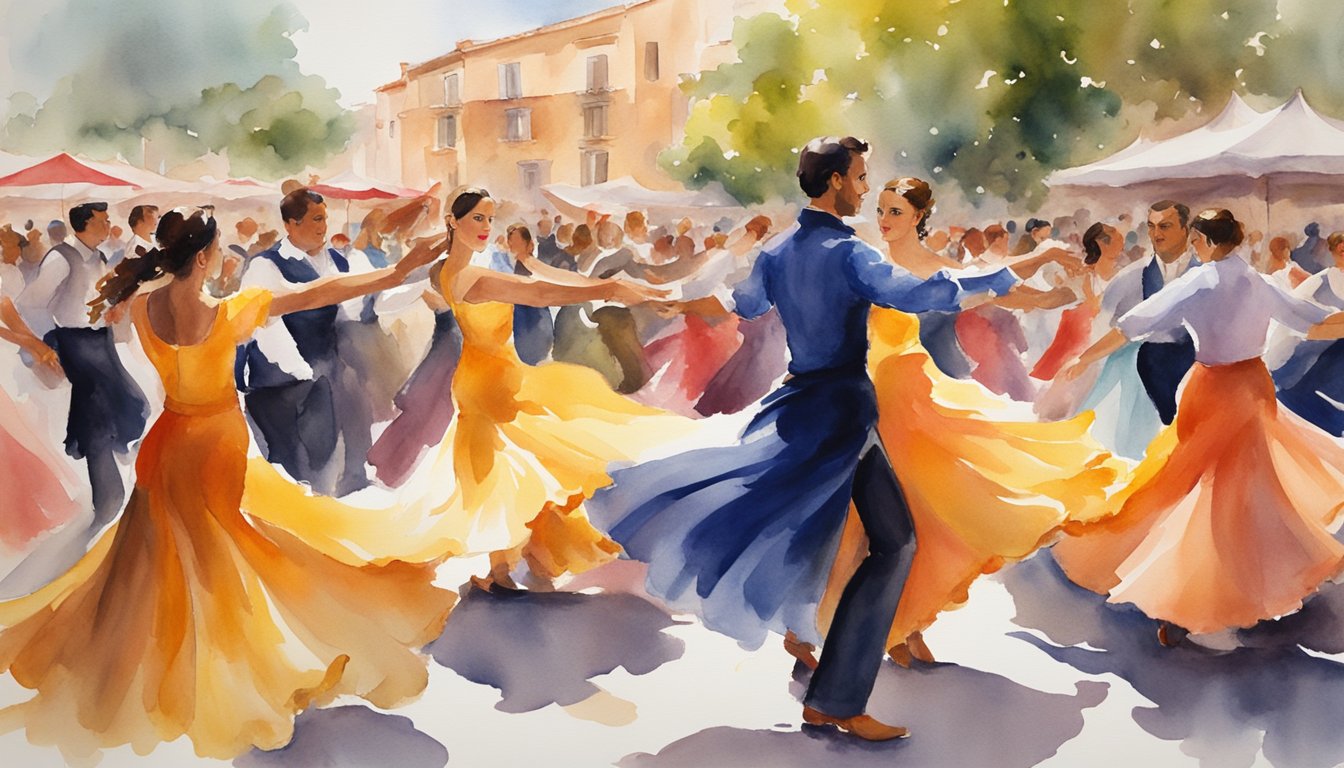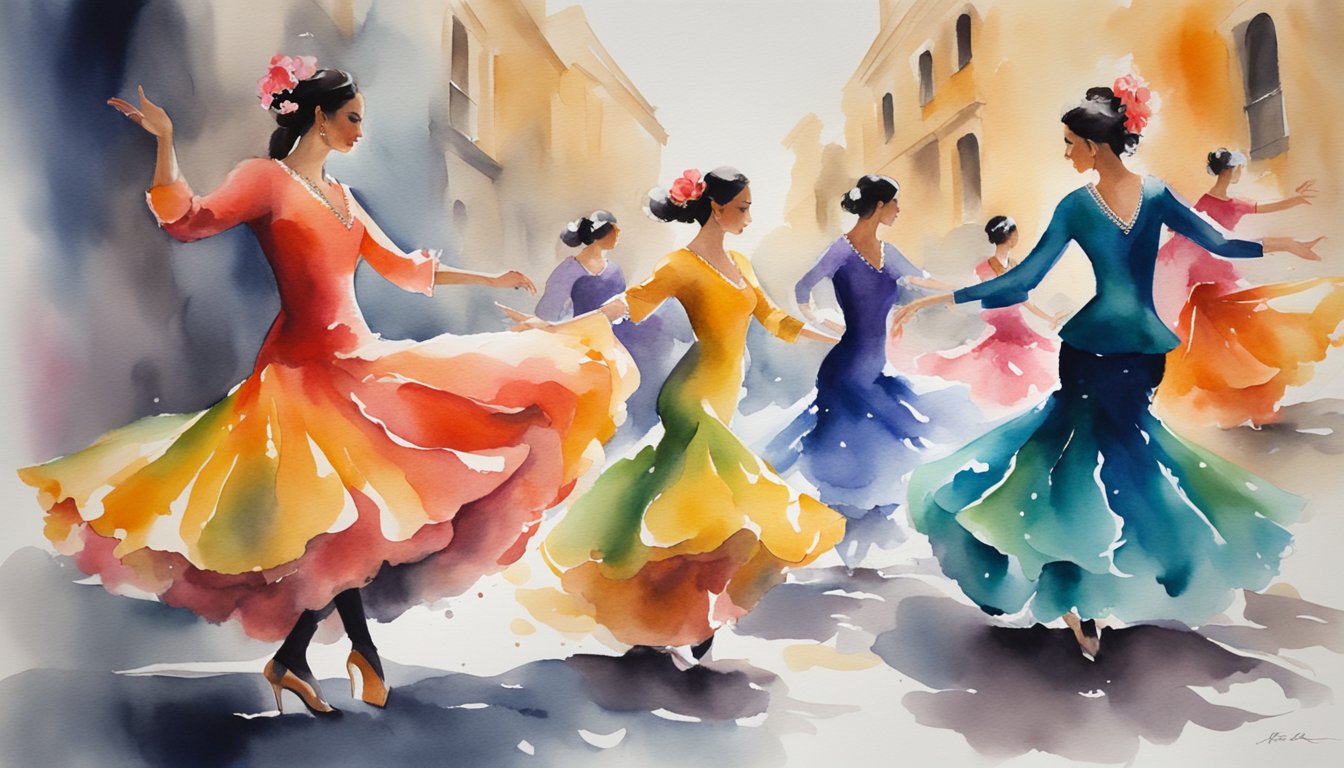Origins and Evolution
Tracing the vibrant timeline of flamenco reveals a tapestry of historical and cultural threads. This section unwraps the deep-seated origins and evolution of flamenco, from its multicultural roots to the rich traditions of Andalusia that have shaped its course.
Historical Roots
Flamenco’s past is as captivating as its performances. It is widely believed that flamenco originated in the Andalusian region of Spain, evolving from various influences during the centuries. Notably, the Roma migration to Spain played a critical role in its development. The Roma people, or Gypsies, are believed to have brought with them musical forms from India and incorporated these into the local Andalusian folklore, creating a unique blend that laid the groundwork for flamenco.
Cultural Influences
Cultural intermingling in Spain, especially in Andalusia, has led to the rich tapestry of flamenco. It is thought that flamenco was influenced by a variety of cultures, including those of the Sephardic Jews, Moors, and remnants of medieval Andalusian music. Each group brought their melodies, rhythms, and traditions, which combined over time to form the early threads of flamenco music and dance that are recognizable today.
The Role of Andalusia
Andalusia is not just a backdrop but a key player in flamenco history. The region’s distinct cultural elements and social environment provided fertile ground for flamenco’s evolution. Flamenco music and dance became expressions of Andalusian identity, embodying the spirit of a resilient and vibrant community. Over time, flamenco evolved from its folkloric roots to become a global phenomenon, standing as a proud symbol of Andalusian culture.
Artistic Elements

Flamenco, a rich and dynamic cultural expression, encompasses a variety of forms, each with distinct musical and dance aspects. The intricate details within its music and dance make it a vivid tapestry of Spain’s diverse heritage.
Forms and Styles
Flamenco is marked by deep emotions and a variety of palos or styles. These range from the profound cante jondo (deep song) to the lighter cante chico, with genres like alegrías, bulerías, and fandangos adding to its vibrancy. Each style presents its own mood, the duende or soul of flamenco, often tied to specific regions like the soleá from Andalusia.
Flamenco Music
At the heart of flamenco music is the toque, the guitar playing which forms the spine of this art form. The flamenco guitar is not merely an instrument but an extension of the cantaor’s (singer’s) expression, complemented by intricate fingerwork and dynamic rhythms. Vocal styles range from the deep, soulful cante jondo to the more playful and rhythmic cante intermedio and cante chico.
Flamenco Dance
Flamenco dance, or baile, is as expressive as the music, with each movement reflecting a complex range of emotions. Dancers use their bodies to interpret the music, from solemn siguiriya to exuberant sevillanas. The use of props like castanets, coupled with the melodic jingle of traditional flamenco dresses, adds layers to the performance. It’s a spectacle where the bailaor (dancer) might present a narrative of struggle, passion, and celebration through their dance, supported by palmas (hand clapping) and jaleo (shouts of encouragement), making the flamenco dance an enthralling experience.
Cultural Impact and Modern Expressions

Flamenco’s rich historical tapestry and its fusion with modern influences highlight its enduring appeal across generations and borders. Dynamic artists have propelled it from the streets of Andalusia to global stages, where it continues to evolve.
Famous Personalities
Flamenco has been graced by numerous influential figures who have left an indelible mark on the art form. Poets like Federico García Lorca championed flamenco through their reverence of Gypsy culture, while composers such as Manuel de Falla collaborated with flamenco artists, enhancing its complexity and reach. Flamenco legends like Enrique Morente and Joaquín Cortés not only mastered traditional styles but also infused them with contemporary sounds, showcasing the versatility of flamenco.
Flamenco’s Global Journey
From intimate venues in Sevilla to large concert halls in Europe and beyond, flamenco has undergone a spirited expansion. The art form has resonated with audiences worldwide, much like the traditional blues captured hearts in America. This global journey has transformed flamenco from a regional folklore to a celebrated international phenomenon, recognized for its powerful expressions of duende, or profound emotion.
Contemporary Scene
In modern times, flamenco schools have flourished across cities like Murcia and Granada, preserving the tradition while nurturing innovation. Today’s artists often combine guitar music with elements like jazz or even electronic beats, bringing an eclectic sound to flamenco. With its passionate dance and intricate musical style, flamenco continues to captivate and evolve, driven by the profound song, or cante jondo, and the rhythmic heartbeat of the wooden castanets and guitars.
Discover the flamenco’s essence and its symbiotic relationship with tourism. Explore passion and politics’ role in shaping flamenco’s narrative and delve into the intersection of flamenco music and national identity in Spain. Understand how Andalusian, gypsy, and class identity influences the contemporary flamenco scene.

